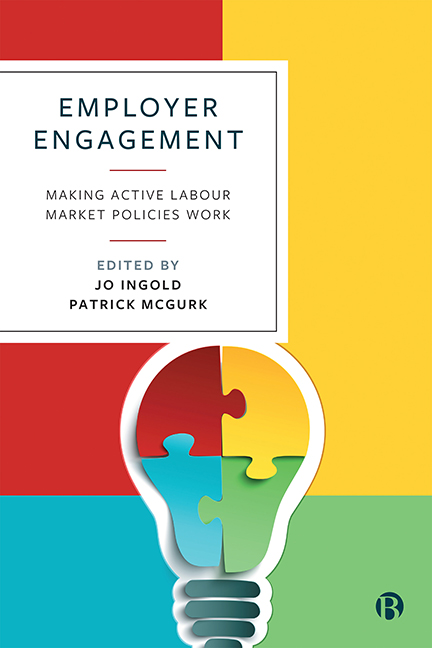Book contents
- Frontmatter
- Contents
- List of Figures and Tables
- List of Abbreviations
- Notes on Contributors
- Acknowledgements
- 1 Introduction: Why Is Employer Engagement Important?
- Part I The Macro Level: Political Economy and Policies
- Part II The Meso Level: Programmes and Actors
- Part III The Micro Level: Workplaces and Their Contexts
- Index
11 - HRM and Social Security: It Takes Two to Create a Transitional Labour Market
Published online by Cambridge University Press: 18 January 2024
- Frontmatter
- Contents
- List of Figures and Tables
- List of Abbreviations
- Notes on Contributors
- Acknowledgements
- 1 Introduction: Why Is Employer Engagement Important?
- Part I The Macro Level: Political Economy and Policies
- Part II The Meso Level: Programmes and Actors
- Part III The Micro Level: Workplaces and Their Contexts
- Index
Summary
Introduction
Social security and social policy science studies the function, organization, legal basis, costs and effects of social security and labour. The public social security system protects individuals and households against the financial consequences of illness, disability, unemployment and old age. Since the end of the 1980s, socially activating labour market policies in Europe have been aimed at allowing people who do not participate in the labour market to enter the regular labour market as much as possible, so that they no longer have to use social security benefits (typically, a volume policy that aims to minimize the number of people on social benefits). The core idea behind this is that the best form of social security is to be able to obtain and keep work as a source of income. In the mid-1990s, labour market research shifted towards a transitional perspective on labour markets (Schmid, 1995). Social security thinking is no longer about the current labour market status of individuals (employed or unemployed), but also about accounting for the transition people make to, in and from the labour market. This more dynamic view of the European labour market is referred to as the transitional labour market (Schmid and Gazier, 2002). Employment security (the possibility of finding employment and remaining employed, but not necessarily in the same job with the same employer) (Borghouts-van de Pas, 2010) is the new focal concept replacing the concept of job security (expectations of holding a specific job for a long time) (Wilthagen and Tros, 2004; European Foundation for the Improvement of Living and Working Conditions, 2008). The transition from one job to another in the event of redundancy, instead of the transition to unemployment, is a crucial one that enhances employment security (Voss et al, 2009). Employers, not social policymakers, offer jobs and employment. Taking this perspective as a starting point, it is important to focus on the coherence and mutual influence of social security and employer behaviour by means of their human resource management (HRM) policies in facilitating a transitional labour market.
- Type
- Chapter
- Information
- Employer EngagementMaking Active Labour Market Policies Work, pp. 182 - 200Publisher: Bristol University PressPrint publication year: 2023



